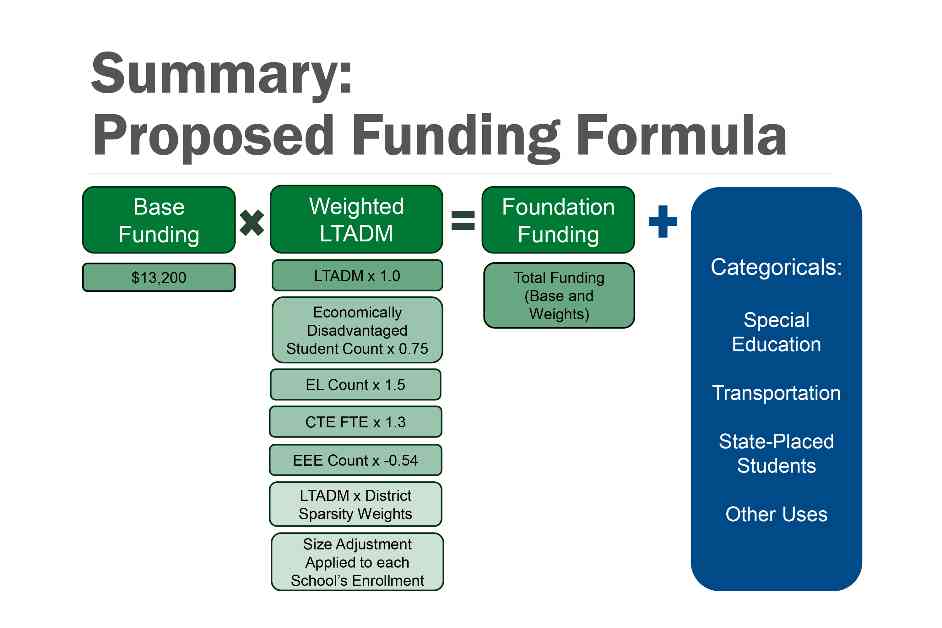On January 30 and 31, 2025, the Vermont Agency of Education presented a portion of Governor Phil Scott’s ambitious education reform plan to House and Senate committees. The proposal, which aims to completely transform the state’s education system by fiscal year 2028, has sparked both interest and skepticism among lawmakers.
In her presentation, Zoie Saunders, Vermont’s secretary of education, outlined the administration’s proposed foundation formula, shedding light on the financial implications of the plan. With an estimated cost of nearly $184 million less than the current $2.3 billion education budget, the proposal introduces a base amount per student of $13,200, positioning Vermont as one of the states with the highest per-student funding in the country.
The committees responsible for education, finance, and ways and means carefully scrutinized the details of the proposed formula, which includes weight adjustments for various student demographics such as English learners, at-risk pre-K students, and technical centers. As Saunders navigated through complex excel files and mathematical calculations, lawmakers grappled with the intricacies of the plan, recognizing the need for a comprehensive understanding of its implications.
The urgency of the proposed education overhaul has left many lawmakers racing against the clock to grasp the intricacies of the plan. With less than three months of the legislative session remaining, the challenge lies in balancing thorough analysis with timely decision-making. The Commission on the Future of Public Education in Vermont, tasked with guiding policy changes, faced a roadblock in drafting actual legislation, leaving Governor Scott and his team to take charge of the reform efforts.
As Vermont hurtles towards a complete transformation of its public education system, the Democrat-controlled Legislature finds itself in a reactive position, responding to the details rather than shaping them. The Agency of Education, under the leadership of Saunders and her deputy Jill Briggs Campbell, emerges as a key player in driving the reform agenda, leveraging their expertise to guide lawmakers through the complex landscape of education funding.
Addressing the Housing Crisis: A Race Against Time
The pressing issue of housing instability in Vermont has emerged as a critical concern for lawmakers, particularly in light of the impending April 1 deadline when the temporary loosening of motel program rules will revert to stringent limitations. Following a wave of evictions from the state’s hotel and motel program for individuals experiencing homelessness, the House Human Services Committee has proposed a waiver to extend the 80-night limit on motel stays and the 1,100-room cap through the end of June.
Rep. Theresa Wood, chair of the committee, emphasized the need to avert a potential crisis by providing a temporary reprieve for vulnerable individuals until a more sustainable solution can be implemented. By waiving the restrictions on motel stays, lawmakers aim to redirect their focus towards comprehensive reforms in the state’s emergency shelter program, addressing the root causes of housing insecurity.
Workforce Development: Navigating Vermont’s Economic Landscape
The Vermont Futures Project, affiliated with the Vermont Chamber of Commerce, has underscored the importance of workforce development in sustaining the state’s economy. With a goal of adding approximately 13,500 individuals to the workforce annually over the next decade, Vermont faces a significant challenge in bridging the gap between labor demand and available talent.
The organization’s Economic Action Plan, unveiled recently, outlines a strategic roadmap to foster economic growth by increasing the state’s population and expanding its housing stock. By aligning workforce development initiatives with long-term economic goals, Vermont aims to position itself as a thriving hub for innovation and prosperity.
Empowering Communities: Tracking Immigration Enforcement Activities
In response to escalating concerns about immigration enforcement activities in Vermont, the Vermont Asylum Assistance Project has launched an “ICE tracker” form to facilitate the reporting of suspicious or observed incidents involving U.S. Immigration and Customs Enforcement (ICE). By creating a platform for community members to document enforcement actions, the initiative seeks to enhance transparency and accountability in federal immigration operations across the region.
As President Donald Trump’s second term unfolds, the need for vigilant monitoring of immigration enforcement practices becomes increasingly pronounced. The ICE tracker form serves as a vital tool for capturing real-time data on enforcement activities, empowering advocates and stakeholders to advocate for immigrant rights and protection.
These ongoing developments underscore the dynamic landscape of policy reforms and social initiatives shaping Vermont’s future trajectory. By engaging with diverse stakeholders and fostering dialogue on pressing issues, the state strives to cultivate a more inclusive and resilient community for all its residents.









